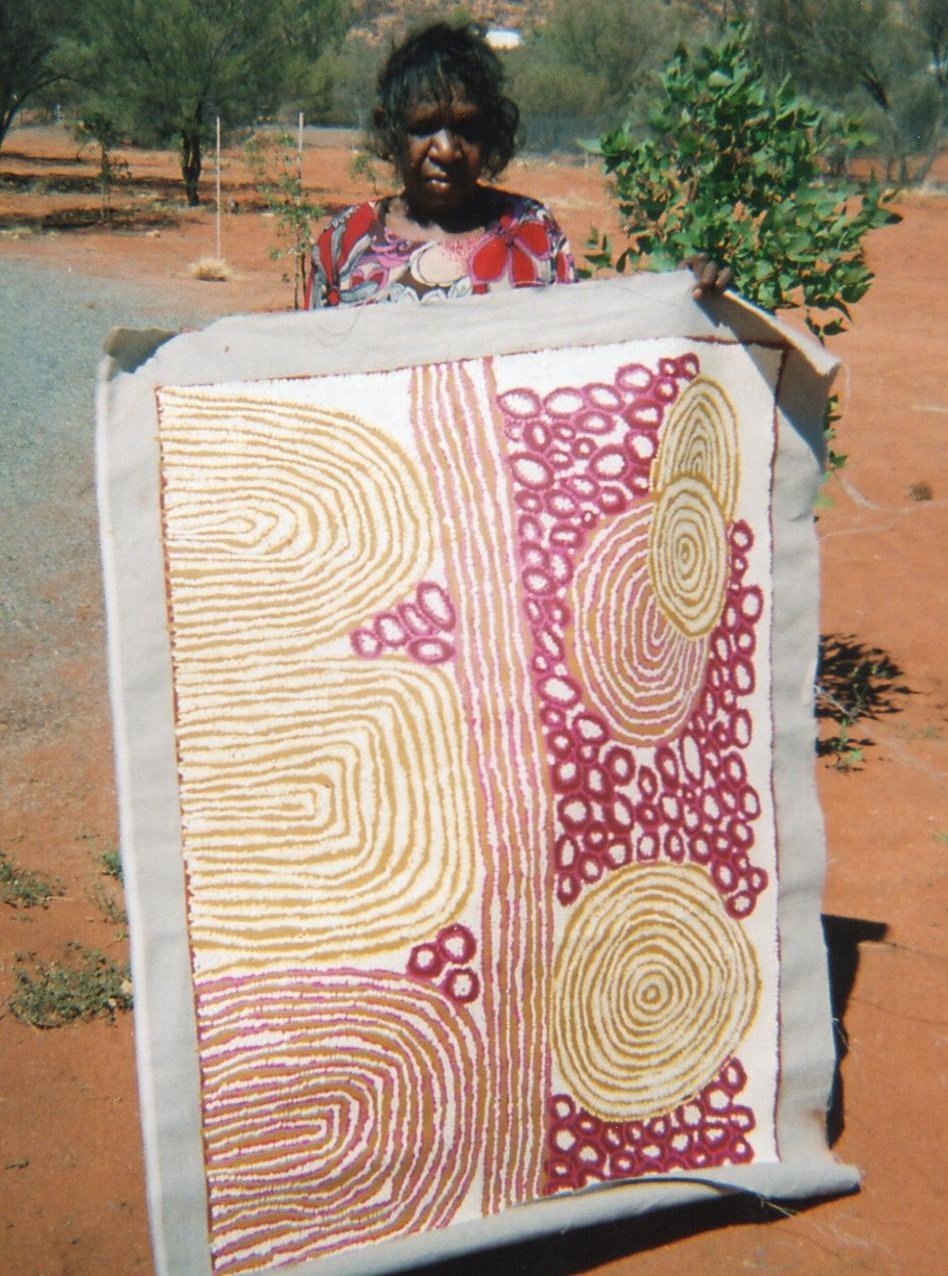WALANGKURA NAPANANGKA II
MARKET ANALYSIS

Walagkura’s earliest paintings created from 1996 became popular for their exploration of aspects of principally Tingari stories. She was quick to develop an identifiable style in which sparsely dotted circles in a variety of colours, became more densely painted in a more restricted pallete over time. The connecting lines, typical of Pintupi men’s paintings were removed and small circles rendered in various shades became spaced, as if the wind had blown them into tighter and looser groupings. The first work appeared at auction in 1999 in a Sotheby’s mixed offering. Unillustrated in the catalogue and measuring just 91 x 46 cm Rockhole Site of Yukatjirri had been created in 1996 and sold for just $747 (Lot 519). It was not until July 2001 when the next work was offered and by this time Walankura had become quite consicuous in the primary market. The small 91 x 61 cm work , created in 1997, doubled its high estimate selling for $6,000, now the artists 26th highest record. By the end of 2004 roughly corresponding to the time from which she bagan painting for others outsode of Papunya Tula 9 works had sold of 12 offered however thereafter a flurry of works were offered on the secondary market . No less than 68 paintings appeared for sale in just three years between 2006 and 2008 and with only 51% selling this had the effect of lowering her previous success rate, which stood at 65% to its current 55%.
Her most successful work in a cobventional Pintupi style was the Tingari image Rockhole at Tjintjin Tjintjin at sold at Elder Fine Art in June 2007 for what was a bargain price. The painting measured 182 x 151 cm and carried a very low presale estimate of just $10,000-15,000. I wish I had been the buyer who paid just $7,300 for what is, in my opinion, close to a materpiece.
Sotheby’s have restricted their offerings on ideological grounds to only 10 works created for Papunya Tula and these have sold for a total of $98,307 while Lawson-Menzies,have made the most profligate offerings having sold 17 works for an average of $12,932. Mossgreen have sold 7, Leonard Joel 5 and the remainder of sales are spread across an array of other houses.
Her highest 2 results are for the same work offered through Lawson-Menzies in May 2006 and later in March 2008. When first offered, the massive Kutungka Napanangka at Papunga 2005, created for independent dealer Tony Mason sold to a Menzies investment consortium for $45,600 eclipsing the $20,400 record held by the Papunya Tula provenanced Travels of Kutungka Napanangka 2001, that had stood since 2004. Advised to offer the work again 2 years later, the work realised a 16% increase in value to $52,800, not enough profit to cover the buyers premium even if the owners were given 0% sellers commission.
In her works of the 2004-2008 period Walangkura plays with conventional Pintupi icons by moves them around and stretches out the shapes with a mastery over balance and form. Like Naata Nungurayi and several other pintupi women she embraces gridlike forms and striated bands of alternating colour. Her 3rd highest result is a fine example created at the beginning of this period. When offered at Lawson~Menzies in November 2006 the 154 x 184 non-Papunya Tula work sold for $28,800 against a presale estimate of $30,000-40,000( Lot 173).
Overall 2008 was a good year for the artist with 11 of 17 works sold at an average of $10,807. It included however her record setting result and leaving this aside her average price for the year drops to a modest $6,608. Interest in Walangkura centres principally on those works she created in her more recent style and while Papunya Tula provenance can add value, during the last 3 to 4 years her prodigious talent and independent nature has seen her work for a variety of reputable alternative dealers. Still, Papunya Tula works occupy 7 of her top 10 results and 15 of her top 20. It should be a salutary warning for the hundreds of large and small collectors who have been buying her works through any but the most established exhibiting galleries. As time goes on those works created for independent dealers may prove difficult to sell. They will need to be amiongst her finest paintings and will require additional provenance if they are to be accepted by the major auction houses for sale.
© Adrian Newstead

